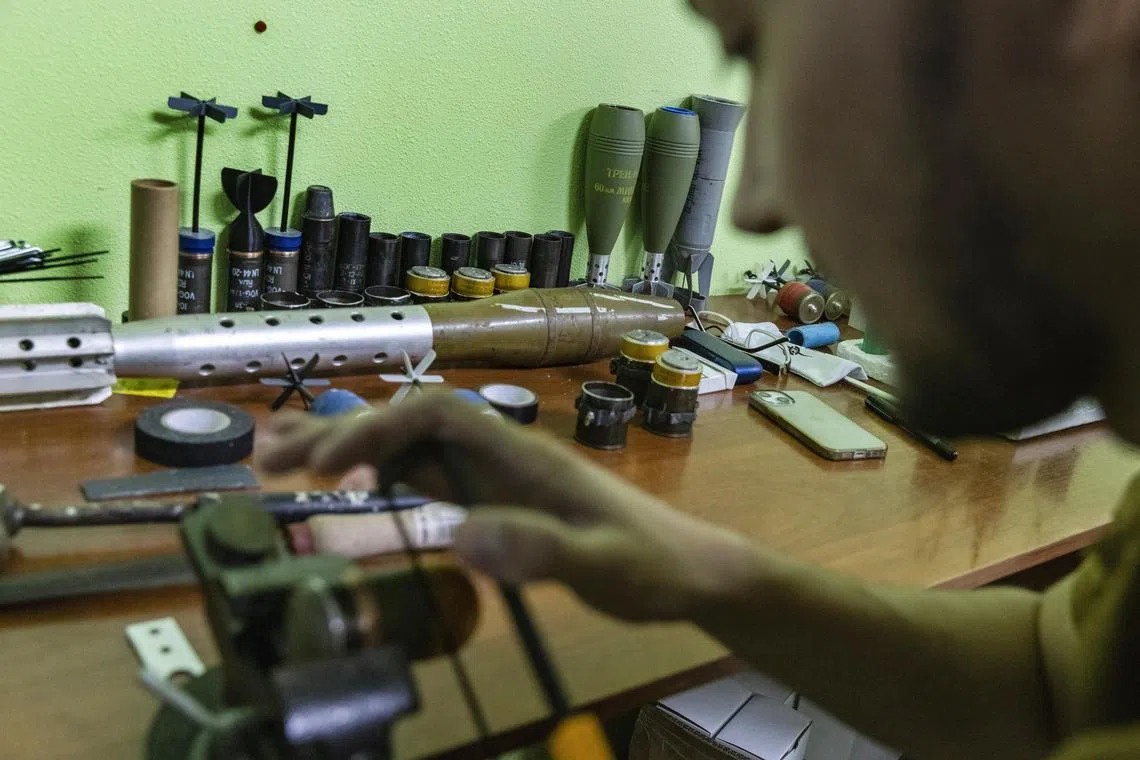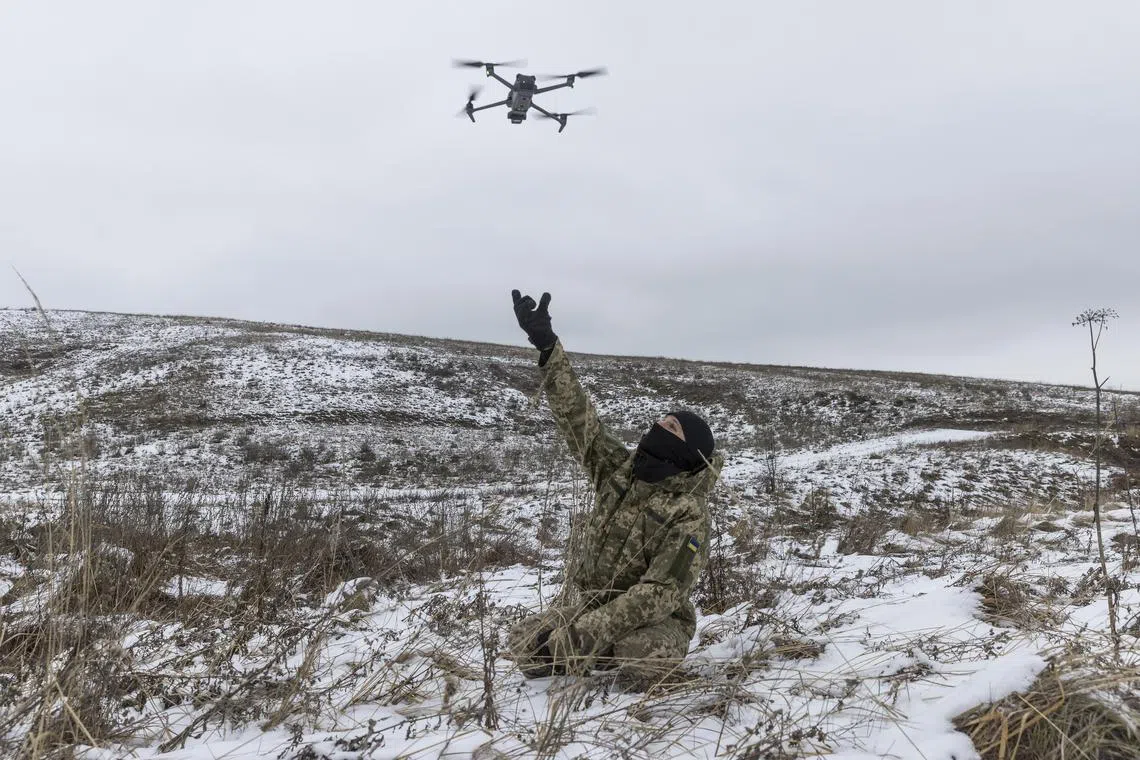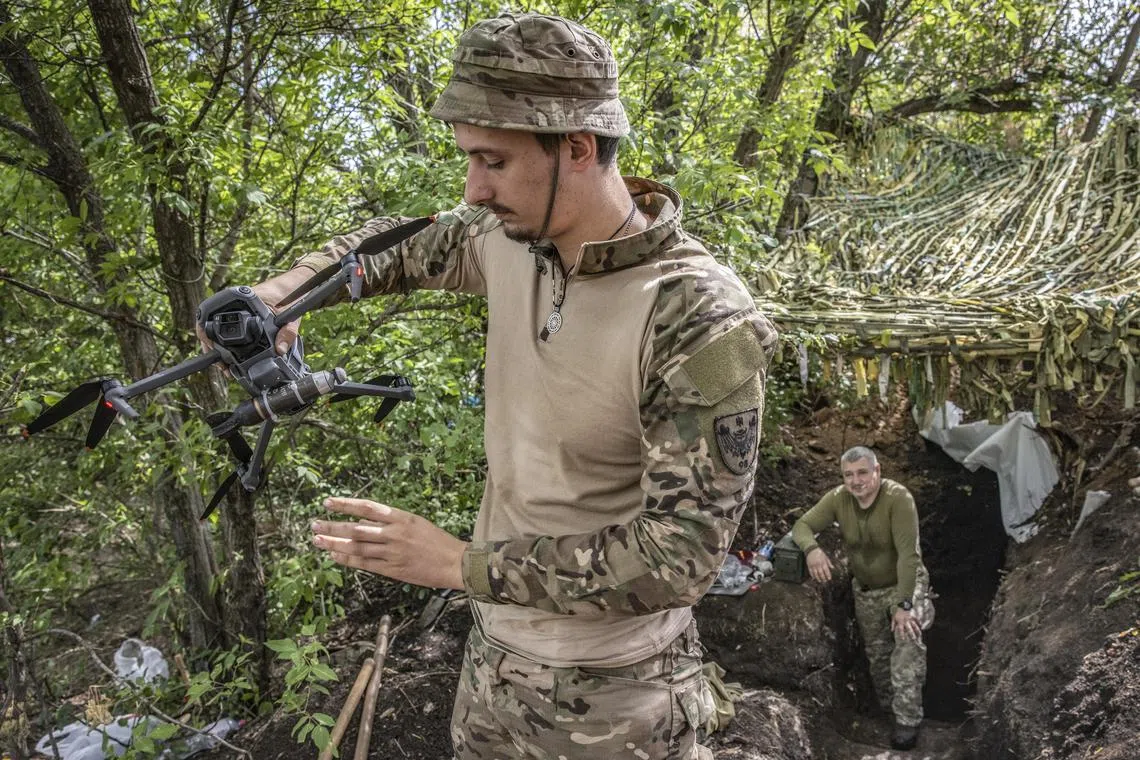In a Ukraine workshop, the quest to build the perfect grenade
Sign up now: Get ST's newsletters delivered to your inbox

A fighter with a unit in Ukraine’s National Guard modifies grenades to be used as bombs attached to small drones, at a workshop outside Sloviansk, Ukraine.
PHOTO: NYTIMES
Follow topic:
SLOVIANSK, Ukraine – An array of mostly unremarkable items stretched across two wooden tables on the far side of a cramped workshop in eastern Ukraine: double-sided tape, gloves, Allen wrenches, a soldering iron, 3D-printed plastic, ball bearings, a digital scale.
Next to them was a German DM51 fragmentation grenade.
They were all important ingredients for Ukrainian troops trying to piece together a puzzle: How do you create a grenade that weighs next to nothing but can be dropped from a drone and destroy a roughly 36-tonne Russian tank?
“War is an economy. It’s money,” said Graf, a stout, bearded Ukrainian soldier in charge of his unit’s drone team.
“And if you have a drone for US$3,000 and a grenade for US$200, and you destroy a tank that costs US$3 million, it’s very interesting.”
Since Russia launched a full-scale invasion of Ukraine nearly a year ago, technological advancements on the battlefield have mostly centred on both countries’ increased use of small, remotely operated drones and their growing importance in almost every aspect of the war.
Now Graf and his team, who have become experts at killing Russian troops with munitions dropped from the air, are trying to raise the drones’ effectiveness to the next level: by using them to deliver what they consider the perfect grenade.
The challenge is building that grenade.
The tinkering in Graf’s workroom is another example of how Ukraine’s military has adapted as the war progresses, creating advantages in the face of the Russian army’s superiority in troop numbers and long-range weaponry.
The grenade, Graf said, should weigh around 1.1 pounds (0.5kg), the maximum weight a DJI Mavic 3 drone can carry without its flight being significantly disrupted.

A member of a volunteer battalion practices the launch and retrieval of a DJI Mavic drone, as the group trains outside Kyiv, in December 2022.
PHOTO: NYTIMES
To get the grenade closer to the desired weight, his team has been using a 3D printer to try to make a lightweight casing that can hold the explosives needed to penetrate a tank’s armour. The painstaking task involves experimenting with grenades of differing designs, clasped in a vice in their workroom, and operating around the explosive mechanisms to fine-tune them.
Despite the risks, Graf and his team continue to tinker in their workshop teeming with different kinds of explosives, edging ever closer to the elusive tank-killing grenade. Currently, they have a munition that they say can penetrate Russian armour, but it is around a half-pound too heavy. NYTIMES

A private in the Ukrainian army attaches a grenade to a DJI Mavic 3 drone, before remote-piloting it over Russian front-line positions.
PHOTO: NYTIMES

